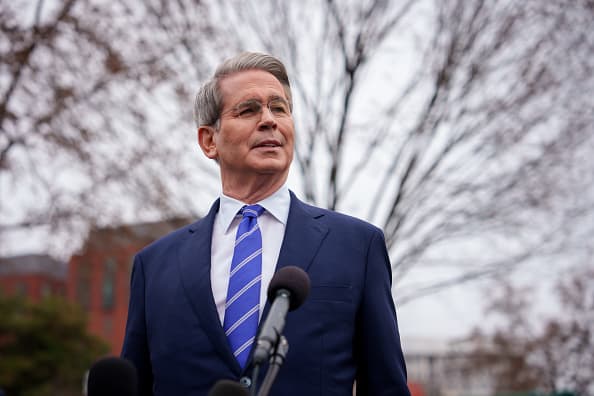U.S. oil prices dropped below $60 a barrel on fears President Donald Trump’s global tariffs would push the U.S., and maybe the world, into a recession.
The decision by key OPEC+ producers last week to increase the pace of production hikes has also put downward pressure on oil prices. Saudi Aramco on Sunday slashed the price of its flagship Arab Light crude.
Futures tied to U.S. West Texas intermediate crude hit a session low of $58.95 per barrel. Global benchmark Brent fell to an intraday low of $62.51.
U.S .crude oil was last down 2.6%, or $1.68, at $60.31, while Brent was down 2.3%, or $1.50, at $64.08. The benchmarks were trading at their lowest levels since 2021. The latest price action comes after U.S. crude and Brent closed down more than 10% last week.
Trump touted the steep fall in oil prices early Monday.
“Oil prices are down, interest rates are down (the slow moving Fed should cut rates!), food prices are down, there is NO INFLATION, and the long time abused USA is bringing in Billions of Dollars a week from the abusing countries on Tariffs that are already in place,” the president said in a Truth Social post.
But worries are mounting that tariffs could lead to higher prices for businesses, which could lead to a slowdown in economic activity that would ultimately hurt demand for oil.
The tariffs, which are set to take effect this week, “would likely push the U.S. and possibly global economy into recession this year,” according to JPMorgan. The firm on Thursday raised its odds of a recession this year to 60% following the tariff rollout, up from 40%.

Bank of America sees the trade war cutting oil demand growth in half this year at the same time that OPEC+ is increasing production. This would lead to an “eye-watering” surplus of 1.25 million barrels per day, according to the bank.
“If this is the scenario that actually plays out, we believe oil prices and oil-levered equity values have more room to fall,” Bank of America analysts led by Kalei Akamine told clients in a Monday note.
Goldman Sachs on Sunday lowered its oil price forecast for December 2025 by $4 to $58 per barrel for U.S. crude and $62 for Brent. The investment bank sees prices falling further in 2026 with U.S. crude and Brent averaging $55 and $58 per barrel, respectively.
Falling oil prices could force U.S. shale producers to cut production. U.S. crude oil at $60 per barrel is already below the break-even price for some shale companies, said Jeff Currie, chief strategy officer for energy at Carlyle.
“If you go down below 55, you’re now below the economics of the Permian,” Currie told CNBC’s “Squawk Box” on Monday. The Permian Basin is the most prolific oil patch in the U.S. Currie said U.S. crude prices could fall below $50 per barrel.
“The potential for this to overshoot to the downside is pretty significant,” he said, noting that the market is already oversupplied.
It is difficult to predict the overall direction of developments as countries are likely to seek lower tariff rates through negotiations with Trump, said Natasha Kaneva, head of global commodities research at JPMorgan, in a Friday note.
For oil prices, however, “the trajectory is unmistakably one-way,” Kaneva said.

